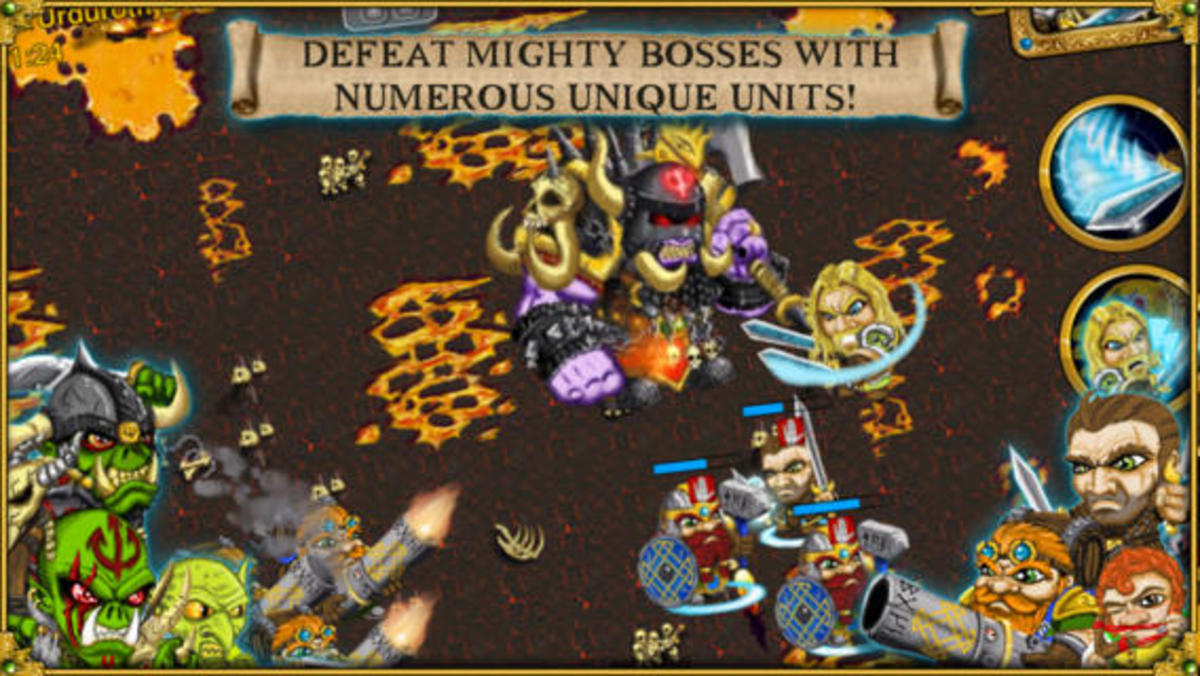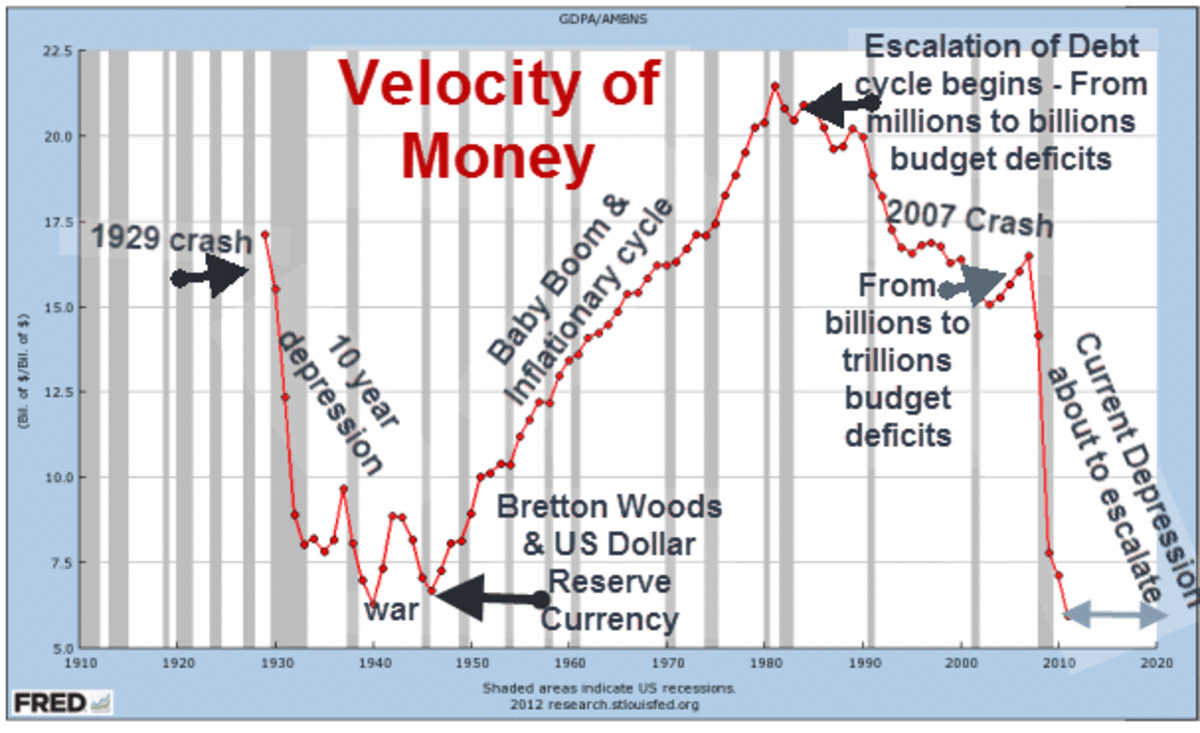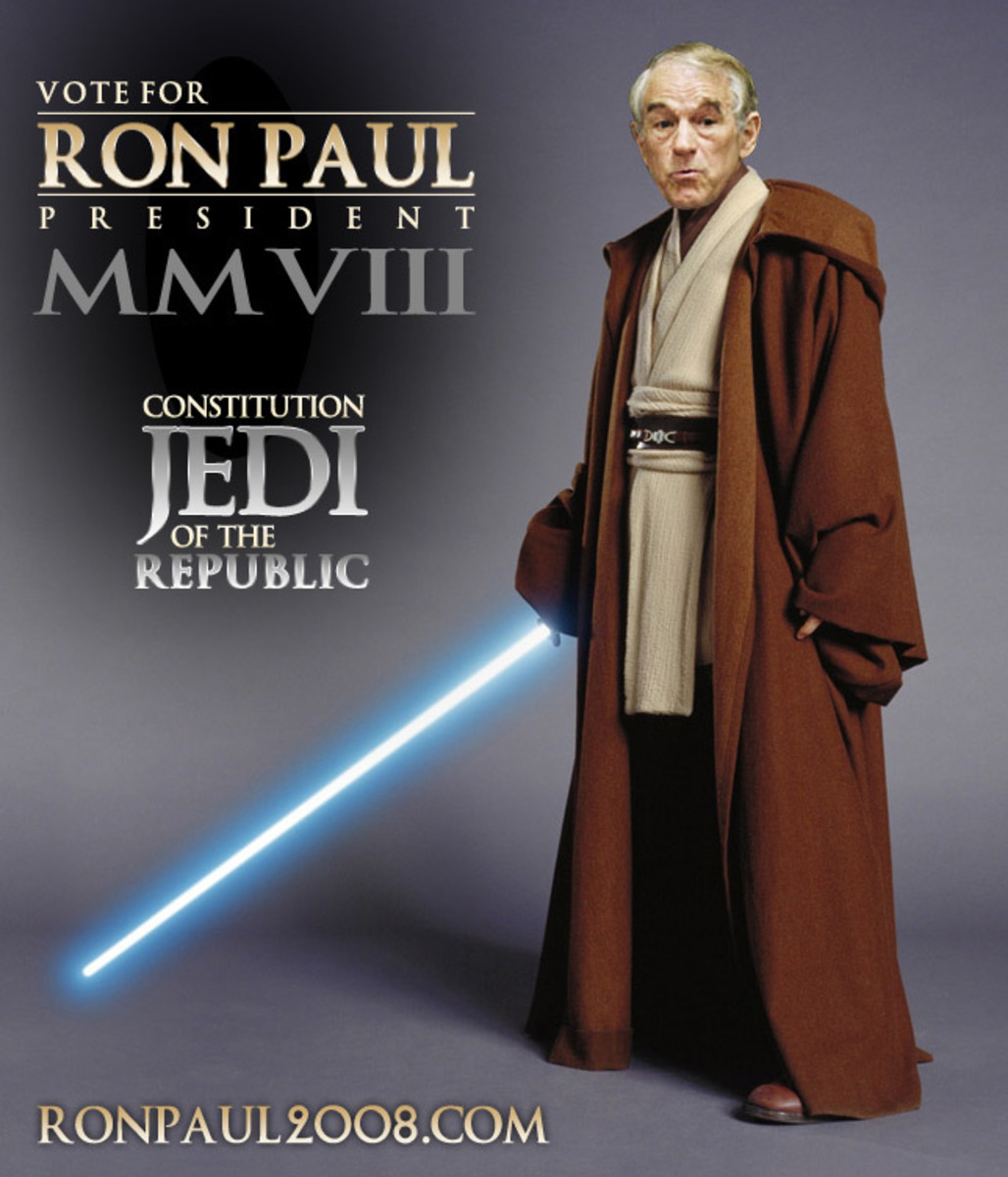The Game of Economics
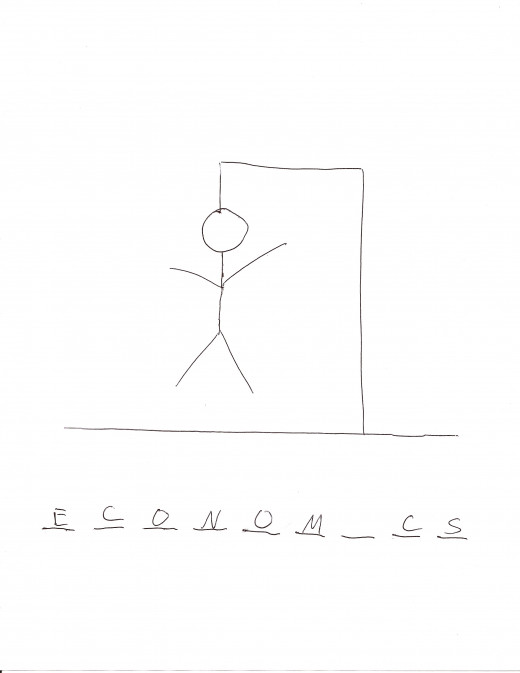
Economic principles are used in daily decisions. Do I want to buy this good? What will the item do for me? Can I find the same thing at a different place for a better price? These choices are made at conscious and unconscious levels. Wether or not we want to admit it, economics is all around us. It can be seen on tv through the various commercials that are beamed into our households.
A car salesman wants the consumer to come onto his lot and buy the cars he sells. The dealer displays a few of the new cars he has just received and some of the "hot" ones. A price for each car is displayed on the screen. You have been following the market for a car as a new addition is coming into the family. A bigger car is needed, but you remember looking at the dealer just down the road offering the same cars for even cheaper. In order to assure that you come to his lot, the car dealer on the commercial says he will beat any price in town. This sounds fantastic. However, is the salesman really looking out for your best interest?
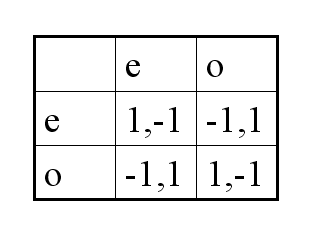

Game Theory
Game Theory is defined by Perloff (2011) as, "A set of tools that economists, political scientists, military analysts and others use to analyze decision making by players who use strategy." There are two main branches of game theory: cooperative and noncooperative. A cooperative game is a situation in which an enforceable contract is created to be upheld by an outside source (police, judge, etc.). A noncooperative game is a situation in which players are unable to make enforceable contracts and in order to cooperate, it must be self-enforcing.
A game consists of players, a strategy, and a payoff. The number of players varies, but the more players, the more complex the game. Games can be visually shown in two forms: normal form and extensive form. They both depict the same game, just in a different way. The goal of both players (or however many there may be) is to choose the strategy that will give them the highest payoff. The payoff is the value (or return) of each outcome a player gets.
It should also be noted that a game can take place simultaneously or with alternating turns. When a game takes place simultaneously the players choose their strategies at the same time. This is noted in the extensive form with a dotted line. When a game is alternating, each player has a chance to react to the choices made by the previous player and adapt their strategy.
The dominant strategy is the optimal one for each individual player. It provides the greatest payoff than any other outcome when compared to the strategies of the other player(s). It is used in predicating the outcome of a game.
Now that you have a general understanding of game theory, lets go back to the car dealer.
(The video below was uploaded to youtube by YaleCourses.)
The Car Dealer
Lets make this as simple as possible. For this game, we will only have the car dealer on the commercial (C) and the car dealer down the road (R).
Each player in this game has two strategies (1 or 2). The table below shows each player with the corresponding outcomes for each strategy.
R1
| R2
| |
|---|---|---|
C1
| 10,000 ; 10,000
| 10,000 ; 14,000
|
C2
| 14,000 ; 10,000
| 14,000 ; 14,000
|
Normal Form of the game. The letter C (commercial) and R (down the road) represent the dealers. The numbers represent the strategies.
As you can see, if each player chooses strategy 1, the cost of a car would be $10,000. If C chooses strategy 1 and R chooses strategy 2 the cost of a car from C would be $10,000 and the cost of a car from R would be $14,000. If C chooses strategy 2 and R chooses strategy 1, then the cost of a car from C would be $14,000 and a car from R would be $10,000. If both dealers chose strategy 2 the cost of a car would be $14,000.
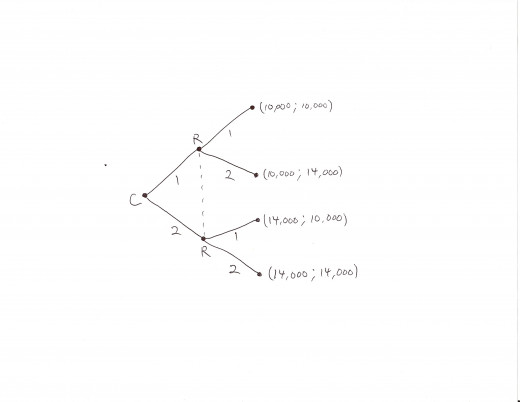
If both dealers were logical, they would choose strategy 1 because, if one choose 1 and the other 2, consumers would go to the dealer with the lower prices.
The Dealer Rigs The Game
Knowing this and the fact that it is illegal to talk with the other dealers about selling prices, C will advertise the price of a car at 2 and offer to beat any price on the market. This allows C to cover both strategies 1 and 2. In doing this, C is telling R to increase his prices.
If R is logical, he will increase prices because he knows that he can't beat C. No matter the price he lowers it too, C will match the value. This prompts R to raise his prices and the value of the car you will be purchasing from either dealer will be $14,000.
The Dealer Wasn't Helping You Out
In the end, the dealer from the commercial wasn't helping you out, but making your life harder. He knew that the dealer from down the road would come to his senses and change the prices of his cars to match the dealer from the commercial.
The one problem with this scenario is that it requires both dealers and consumers to be logical. In the world we live in today, we all know that is not true.
The next time you see a commercial advertising that they can beat any price in town, don't think they are helping you out.
(The video was uploaded to youtube by bigthink.)
Bruce Bueno de Mesquita: How to Buy a Car, Using Game Theory
Works Cited
Perloff, Jeffrey. Microeconomics, 6th ed. Addison-Wesley, 2011.
© hockey8mn, 2012. All Rights Reserved.





